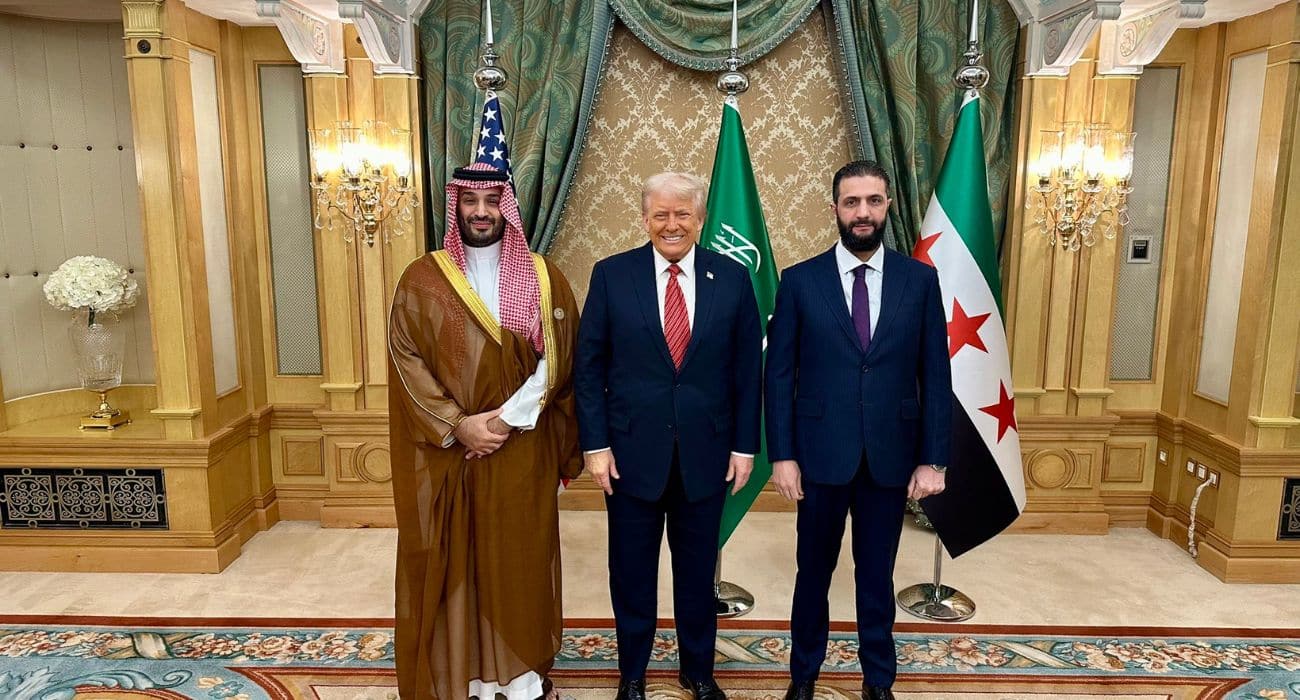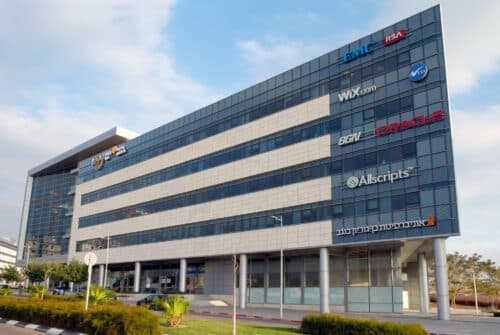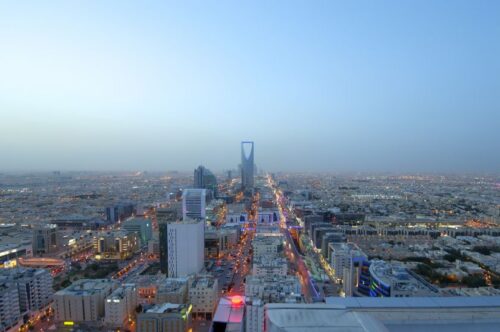
In the Middle East of 2025, changes are unfolding at a dizzying and surprising pace. The recent visit by U.S. President Donald Trump to the region has reinforced the notion that previously unimaginable scenarios might soon become reality. Upon landing in Riyadh, Trump signed weapons and trade agreements worth trillions of dollars. But Trump did not stop there. On the sidelines of his visit, he made a significant diplomatic move by meeting with the controversial and intriguing regional actor, Syrian President Ahmad al-Shara (Abu Mohammad al-Julani). Trump also announced the lifting of sanctions on Syria, offering them an “opportunity for greatness.”
Has yesterday’s most wanted terrorist suddenly become a legitimate partner today?
The fact that al-Julani, who until recently had a $10 million U.S. bounty on his head, has now received public recognition through a meeting with Trump is nothing short of historic. This is the same al-Julani who joined the Iraqi mujahideen in 2003, inspired by the September 11 attacks, even stating previously, “Anyone in the Muslim or Arab world claiming they were not joyful on that day is lying.”
The Middle East stands at a historical crossroads, seemingly marching towards a new regional dawn. Yet, it appears as though the region is divided into two parallel realities:
In one reality, al-Julani is the leader of a jihadist faction that has become the dominant force shaping Syria’s new regime, aiming to establish an Islamic Caliphate. This new regime openly challenges Iran and Shia influence in the Middle East while gaining international legitimacy.
In the parallel reality, the United States and Iran are engaging diplomatically, negotiating over the Iranian nuclear program, with cautious support from Gulf states wary of direct conflict with Iran.
On the surface, this seems to be an unprecedented diplomatic move. However, beneath this façade, might Trump’s actions be part of a broader U.S. negotiation strategy with Iran? Is Trump leveraging al-Julani as pressure on Iran? Could this represent a calculated strategic signaling, not only regarding Syria’s future but also directed at Iran?
Trump may well be using this as a negotiating tactic, sending Tehran a clear message: “If you refuse cooperation, we will partner with your enemies.”
Through an indirect yet potent message, Trump is signaling the possibility of U.S. collaboration with Iran’s fiercest Sunni adversaries – specifically, Saudi Arabia-backed Syrian jihadist factions. In doing so, Trump underscores strengthening relations not only with al-Julani’s jihadist Syria but also with Iran’s significant regional rival, Saudi Arabia.
Trump’s Strategic Chessboard
Trump, known as a shrewd and tough businessman, employs an approach distinct from traditional diplomacy. Instead of endless dialogue and softening stances, Trump opts for a more forceful approach: forming strategic alliances with actors perceived as Iran’s most hostile adversaries – radical Sunni factions and Saudi Arabia.
This tactic aims to exert immense psychological and political pressure on Tehran by instilling fears of new alliances potentially encircling Iran. The ultimate goal is clear: forcing Iran back to the negotiating table under stringent conditions, opposite to Tehran’s longstanding tactic of “diplomatic attrition,” marked by delays, vague statements, and attempts to control international discourse.
“The Syrian Maneuver”
It is plausible that the “Syrian maneuver” is merely a tactical, temporary, yet focused tool. Its purpose is to alarm Iran by presenting a scenario in which its influence in Syria could be severed, compelling Tehran to accept American terms on the nuclear agreement.
For Trump, this move isn’t merely geopolitical, it is deeply psychological. He recognizes that Iran is especially sensitive to losing its leverage in the Sunni-Shia dynamic, particularly regarding Syria, which has been a critical axis for Iranian proxies and weapon transfers. Losing control of Syria might be perceived in Tehran as a genuine threat to its ongoing ability to rebuild its resistance axis.
Meanwhile, Iran continues to employ the leverage remaining in its arsenal: measured nuclear activities (enriching uranium at so-called civilian levels), maintaining centrifuges within its territory, and waiting for a potential administration change in the White House. Such a change would allow rapid resumption of military-grade uranium enrichment.
From Iran’s perspective, Trump’s actions represent a continual erosion of its regional influence. The collapse of Assad’s Syria has given rise to a new Sunni axis, encompassing al-Julani’s Syria, Saudi Arabia, Qatar, and Turkey – a “anti-Iranian-Shia alliance” placing Iran on the defensive.
The Houthis – Tehran’s Last Card?
In this intricate geopolitical landscape, the Houthis in Yemen remain one of Iran’s few remaining leverage points. The Houthis represent Iran’s only active proxy aggressively challenging American and Israeli interests in the region, demonstrated by attempts to disrupt Ben-Gurion International Airport operations through missile attacks.
Simultaneously, Iran is pursuing diplomatic strategies to maintain regional influence. Efforts to strengthen ties with Egypt and Bahrain, and renewed outreach toward Saudi Arabia, form part of a sophisticated strategy to counterbalance the growing Sunni axis. Iranian Foreign Minister Abbas Araghchi’s remarks confirm this: “Relations with Bahrain and Egypt have begun… We are actively working on this, and I hope it will materialize. Our ties with Egypt have never been broader.”
For years, Iran has sought Egypt as a counterbalance to Saudi dominance. Bahrain, with its Shiite majority ruled by a Sunni minority, holds strategic importance for Tehran. Iran views Bahrain effectively as a province and exploits internal tensions due to the sectarian divide. Rapprochement with Bahrain represents a subtle Iranian strategy aimed at weakening the Abraham Accords with Israel.
Ultimately, Iran finds itself under intensifying economic and geopolitical pressure, prepared for almost any step that would lead to sanction relief and the preservation of the Ayatollahs’ rule. In contrast, Trump continues to execute unexpected and unconventional moves as part of a sophisticated diplomatic pressure campaign. In a region where every chessboard movement sends signals and could alter the power balance, Trump strategically maneuvers while keeping the military option open – calculatedly wielding it as a tool to achieve his objectives regarding Iran.
The views expressed in this article are those of the author and do not necessarily represent the views of the movement



